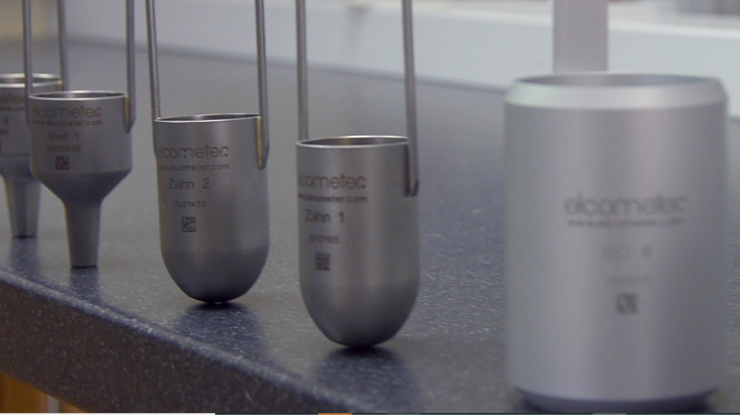Same Cup, Different Gravy

Whilst there are several types of different viscosity cups available on the market they all perform similar functions. Flow cups are filled to the brim, and by using the vacuum created by a glass plate being slid across the fluid meniscus, the fluid is held in place until the plate is removed.
The time is recorded from the moment the glass plate is removed until there is a visible break in the flow. Depending on which type of cup is used, the measured time may be converted into CentiStokes (cSt) - the measure of viscosity - either by using the chart available on the Elcometer website or by using the ElcoCalc App.
What the user perhaps doesn’t realise is that the charts and the App are populated using the formulae that appear in some of the standards which define the geometry of the cups.
This means that if you do not see a cup listed on the chart or in the App, then there is no formula available to convert the time into a cSt value. AFNOR and LORI viscosity cups are two of the cups that do not have a conversion formula available. These cups are therefore used as comparators with the user defining their own “pass/fail” criteria for timings in order to represent acceptable viscosities of their product.
Most cups come in two forms: flow cups and dip cups. Flow cups are typically used in laboratories and should be mounted in a stand in order to give the most accurate values. Dip cups are essentially the same cup with a handle, allowing the cup to be dipped into the fluid thereby enabling a check on the viscosity during the production process.
Over the years, liquid soaps, sauces, blancmange, icing (frosting) and many more foodstuffs have been sent to Elcometer for viscosity testing.Whilst some are suitable for measurement by viscosity cups, sometimes it may not be possible to use a viscosity cup.
On one occasion a customer sent us some sweet chilli sauce to see if we could measure the viscosity. We soon found that the viscosity cups were not best suited to the task as the chilli flakes would block the orifice in the viscosity cup thus affecting the readings. The solution was to use the Elcometer Daniel flow gauge.
Whilst this gauge does not allow the user to ascribe a specific viscosity value to the liquid, we identified how the customer could compare an approved sauce's viscosity to all other batches - using the Daniel gauge as a comparator. The customer was very happy with the solution.
Viscosity is not just related to coatings, producers of inks, foodstuff and other liquids may need to monitor the viscosity of their product. It is often a requirement of the job that Elcometer technicians have to think laterally - outside the box, so to speak - in order to provide our customers with a satisfactory solution.
